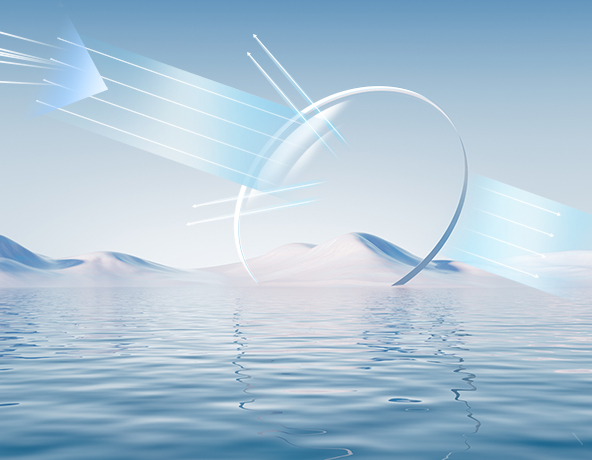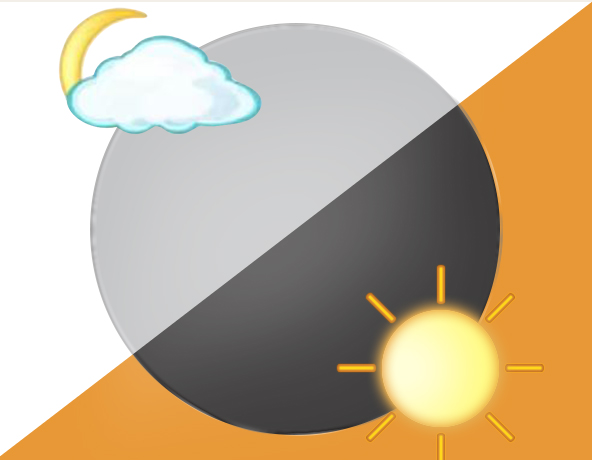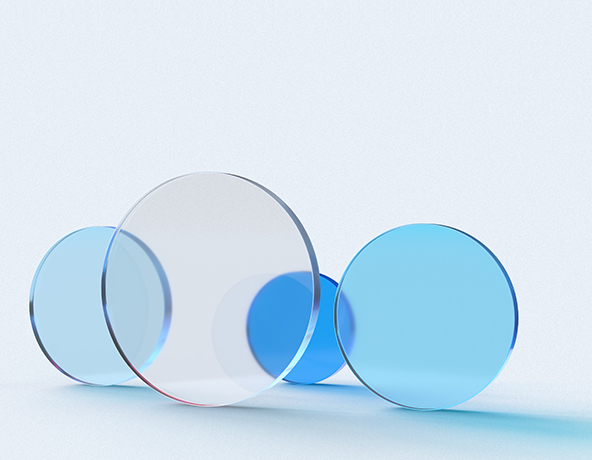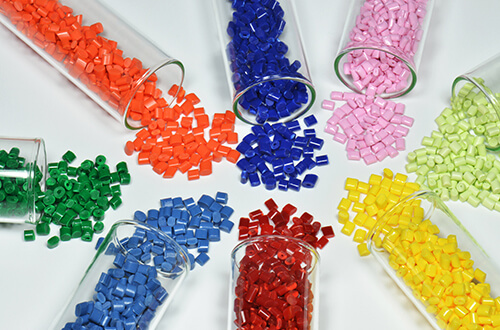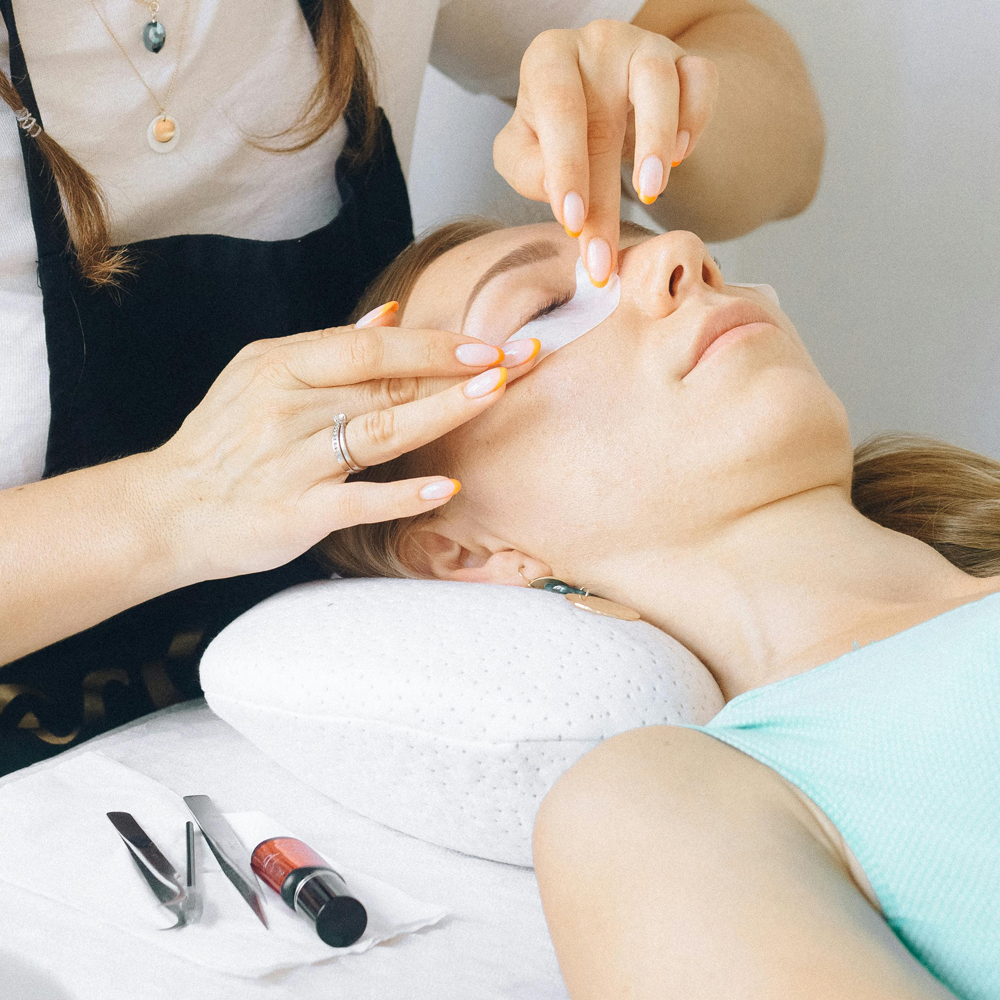Progressive multifocal lenses, also known as progressive lenses, are lenses that have more than one focal point on them, and cosmetically, progressive multifocal lenses are no different from regular lenses. As we age, our eye adjustment begins to decline, causing difficulty in near vision, so that in close work, we may need to add convex lenses to our static refractive correction in order to have clear near vision. Progressive lenses were originally designed to provide a natural, convenient and comfortable correction for presbyopes. Wearing progressive lenses is like using a video camera to videotape a pair of eyeglasses that allow you to see clearly at a distance, as well as close up, and to see mid-distance objects. This is why we also describe progressive lenses as "zoom lenses", a pair of eyeglasses is equivalent to multiple eyeglasses. Progressive lenses are mainly suitable for people who have insufficient adjustment or who have an inward slant.
How do progressive lenses work?
The principle of progressive lenses is to regulate and satisfy the wearer's visual needs at different eye distances (near→medium→distant) and in different eye environments by means of a multifocal design. Only a single progressive lens can be divided into a distance zone, a near zone, a gradient zone, and a distance zone in the upper part of the lens. The far zone in the upper portion of the lens is the amount of power needed to see far away, and is used to see objects in the distance; the near zone is on the lower edge of the lens. The near zone is the number of diopters needed to see near objects; the middle part connecting the two is called the progressive zone, which transitions the number of diopters needed to see far to the number of diopters needed to see near in a gradual and continuous manner, so that it can be used to see mid-distance objects clearly. In terms of appearance, progressive multifocal lenses are no different from normal lenses.
Advantages of progressive lenses
Aesthetic appearance. Compared to bifocal lenses, since the change in lens power is gradual, there is no image jumping, and the appearance is the same as that of ordinary single vision lenses, with no visible demarcation line.
Privacy. It protects the privacy of the wearer's age (for presbyopic lens wearers), and there is no need to worry about revealing the age secret by wearing the lenses.
Convenient to wear. It is easy to see far and near without the need to take off and put on glasses frequently. Clear vision can be obtained at all distances in the visual range. One pair of eyeglasses satisfies the use of distance, near and all distances in between at the same time. For people with presbyopia, the trouble of frequent removal of glasses is avoided.
Disadvantages of progressive lenses
Difficulty in fitting. The optometrist has the experience of fitting high requirements for the precision of the lens, the processing requirements are more stringent, many optometrists because of professional and experience reasons, and therefore afraid to refuse or even deny progressive lenses, so that those who are suitable for wearing progressive can not enjoy a pair of glasses close to the problem of seeing far and near.
Long adaptation time. Need to change the habit of using eyes, generally need about 1 week adaptation time, the first time to wear progressive multifocal glasses may appear: slight dizziness, walking shaking, sports on the stairs need to be careful. First-time wearers should not drive or do strenuous exercise immediately. When you look close, you need to turn your eyes down and have mild discomfort.
Some precautions for progressive lenses
1.Light astigmatism. If you have deep astigmatism then please see this article. Progressive lenses should be light rather than deep, because the vertical prism of progressive lenses in the near zone becomes larger, which will cause the astigmatism and astigmatism axis to change, and the astigmatism and astigmatism axis of the human eye when using progressive multifocal near zones will also change, which will result in the inconsistency of the astigmatism and astigmatism axis of the lens and the human eye, and the use of near zones will be problematic, so it is advisable to be light rather than deep when using progressive multifocals for astigmatism.
2.People who should not take progressive lenses. If you have large strabismus, amblyopia, high refractive error, high blood pressure, motion sickness, cardiomyopathy, then you are not suitable to wear progressive lenses.
Progressive lenses are suitable for some teachers, doctors, musicians, computer operators and so on. This is because these people need to see not only near and far objects, but most of the time they also need to be able to see objects at intermediate distances such as chalkboards, music scores, computer screens, and so on. This is something that no lens other than progressive multifocal lenses can do. In conclusion, progressive lenses offer a convenient and effective solution, if you are considering wearing progressive lenses please consult with your eye doctor, if you want glasses at a good price and with guaranteed quality, EYECEDAR offers you personal quality service and quality glasses.





